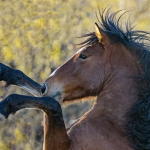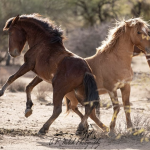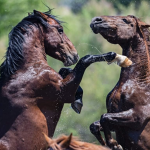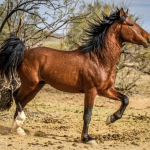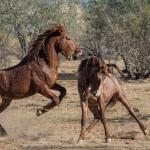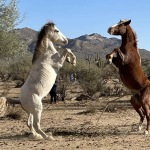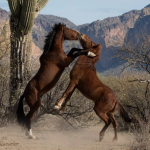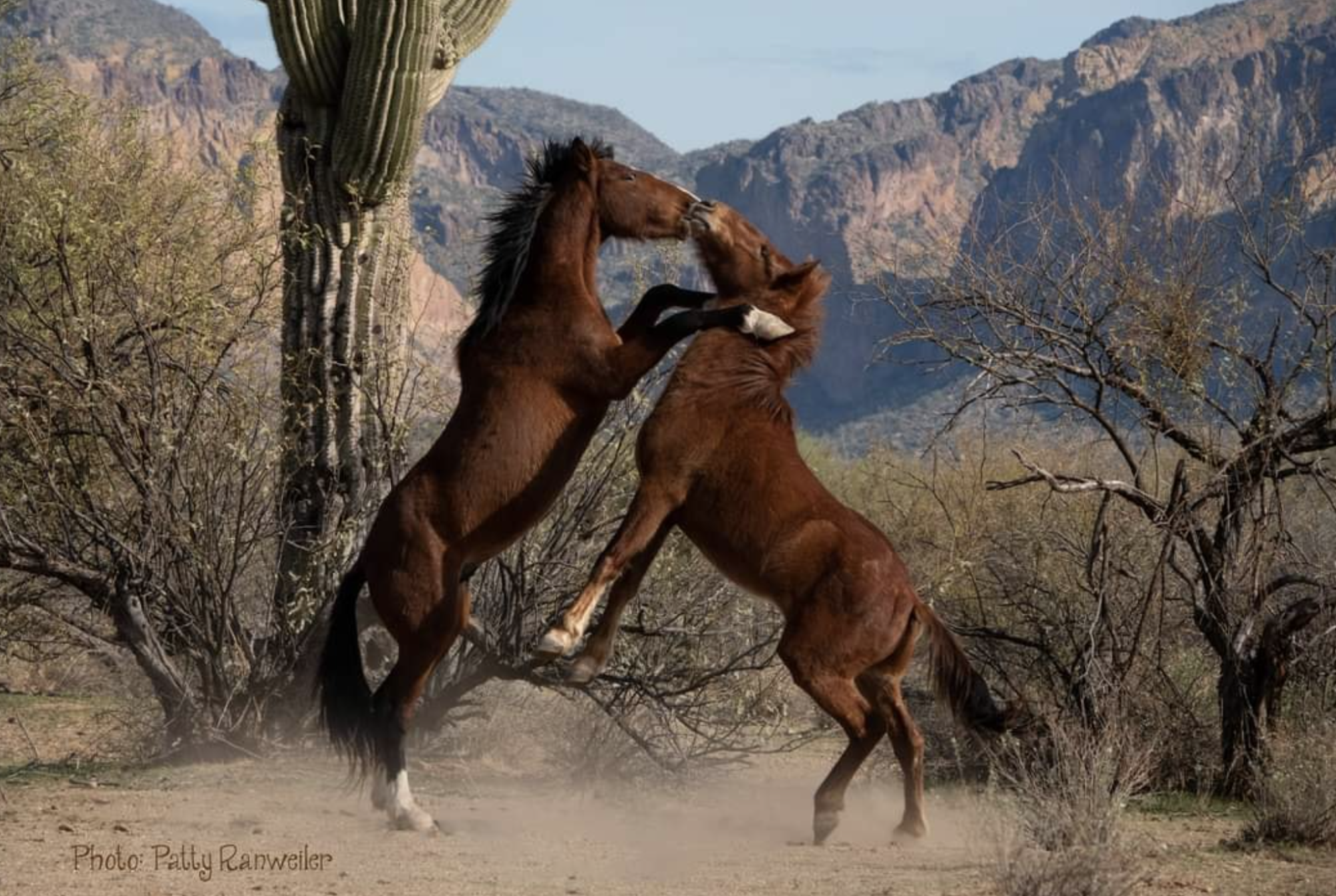
🐴Breeding season🐴
February 20th
Breeding season
As the days are getting longer, wild horses are slowly coming into their natural breeding season. Every early spring, the bands start congregating and socializing more than usual, and the maturing bachelors are scoping out their chances to finding a mare of their own.
Many mares are coming into estrus, including the new crop of 2019 fillies, and it is during estrus that they are accepting of new flirtations. While the breeding act of wild horses does the word “wild” justice, it is a consensual act, and usually the mare decides when and where this happens. A non-receptive mare who is not in estrus will kick the stallion and the stallions usually pick up on those hints immediately.
Our research that spans 5 to 6 generations of Salt River wild horses, or 10 to 20 years on all horses (even longer in some cases), indicates that every year, breeding season starts at the exact same time, during the last week of February, and lasts well into April/May. Fertility control PZP does not change breeding season, because PZP does not influence the hormones of wild horses, and therefore does not change their behavior. They are simply having “safe sex”.
While stallions can be seen fighting for dominance and hierarchy all throughout the year, there is an obvious increase in battling activity during breeding season. You will see posturing, pawing, smelling each other, snorting, and loud squealing at the beginning of the confrontation, and sometimes these intimidation techniques will prevent the fight. But if no resolution is found quickly, then biting, kicking, rearing, lunging (at each other), twirling and kneeling (to prevent hock biting) might ensue.
The fights usually don’t last long, because within a few minutes, a winner is established. The looser is the horse who retreats first, and sometimes the winner will chase the looser far away. Stallions can be seen with battle scars, but it is extremely rare to see it get more serious than superficial wounds. Stallions do not fight to kill, they are satisfied when the opponent gives in.
Horses may be extremely focused on the battle and can chase each other at full speed through the forest, they may not see you.. While these natural behaviors are fascinating to watch, it is not safe to be near battling stallions or running horses, or in the middle of bands, because you might unwittingly be separating horses and changing their behavior.
Therefore please heed this safety warning: Stay 50 ft from the Salt River wild horses at all times, even if they come your way.
Wild horses can be inherently dangerous, they are large and unpredictable, they move quickly and they are capable of violent behavior, even if they appear docile. By your presence in Salt River wild horse habitat you assume all risk and responsibility for damage, injury or sickness to you or your animals or to any property, or minors in your care, even if you exercise caution.
All of the attached amazing and cool pictures were taken from a distance greater than 50 feet, with the use of zoom lenses and cropping as well. They were taken by many different photographers, and are just a small example of the amazing pictures on our Advocates page. Our Advocates page is for photographers and visitors who frequent the Salt River area and like to share and talk about the Salt River wild horses. If you are interested in joining please search for “Salt River Wild Horses – Advocates” and ask to be added.
It is our goal to keep all Salt River wild horses wild and free and be treated humanely. We are dedicated to their protection and are under contract with the state of Arizona (AZDA) for their humane management. The Salt River wild horses are protected pursuant to ARS 3-1491, aka the Salt River Horse Act. The humane management of the Salt River wild horses is made possible through cooperative working relationships between SRWHMG, AZDA and the Forest Service. To learn more and support our cause please visit www.srwhmg.org
You may share these pictures and this post as long as you keep the watermarks in them and keep the original verbiage to go with it.With thanks to the AZDA and all of the photographers on: Salt River Wild Horses – Advocates.

